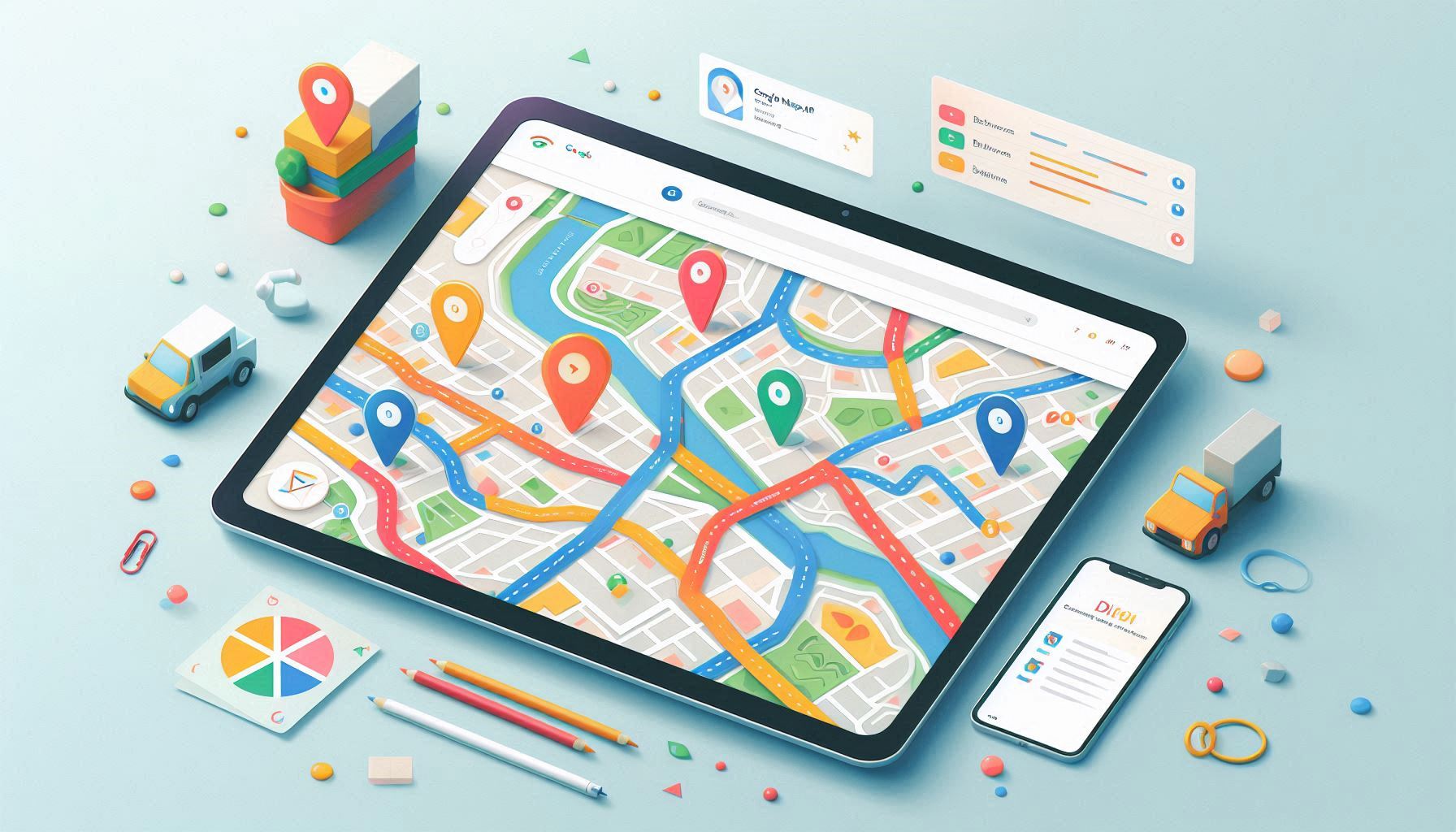
Map-based applications have become a central part of various industries, from transportation and real estate to tourism and e-commerce. Whether you are building an app for finding nearby businesses, tracking delivery locations, or providing real-time navigation, integrating maps into your application offers users a visually rich, interactive experience. The Google Maps API provides a comprehensive suite of features for creating such applications. By leveraging the advanced tools it offers, you can create user-friendly map-based apps that enhance customer satisfaction and engagement.
In this blog, we’ll explore how to build effective map-based applications using the Google Maps API and its advanced features.
The Google Maps API is a powerful toolset that allows developers to embed custom maps, geolocation features, and place data into web and mobile applications. It provides a rich set of functionalities, including map rendering, search, geolocation, geocoding, route planning, and real-time traffic data.
Whether you're building a real-time navigation system or showcasing locations on an interactive map, the API's advanced features can be customised to meet specific needs. Let's explore how these advanced features can help you build user-friendly map-based applications.
One of the key features of Google Maps API is the ability to customise the appearance of your map to match the design of your application. You can change the colours, labels, and other map elements, making it easier to fit your map seamlessly into the app's user interface.
const mapOptions = {
zoom: 10,
center: { lat: 37.7749, lng: -122.4194 }, // San Francisco
styles: [
{
"elementType": "geometry",
"stylers": [
{
"color": "#212121"
}
]
},
// Additional styling options here
]
};
const map = new google.maps.Map(document.getElementById('map'), mapOptions);
Customising the map enhances the user experience by creating a more cohesive and visually appealing interface, while also ensuring that the map fits within the branding of your app.
The Geolocation API within Google Maps allows your app to determine a user’s current location, which can then be used to provide relevant information or guidance, such as nearby stores or services.
For example, if you’re building a delivery app, you can track the real-time location of your users or delivery vehicles. This makes the app more interactive and useful to customers by providing them with up-to-date information.
if (navigator.geolocation) {
navigator.geolocation.getCurrentPosition(function(position) {
const lat = position.coords.latitude;
const lng = position.coords.longitude;
const userLocation = { lat: lat, lng: lng };
const map = new google.maps.Map(document.getElementById('map'), {
center: userLocation,
zoom: 15
});
new google.maps.Marker({
position: userLocation,
map: map,
title: 'You are here'
});
});
}
Tracking the user’s location and displaying it on the map gives the user an instant sense of direction, making navigation more intuitive and straightforward.
The Place Autocomplete service is an invaluable feature for improving the user experience in search-based applications. Instead of forcing users to manually enter long addresses or location names, you can integrate the autocomplete feature, which predicts the place the user is searching for and suggests relevant options as they type.
const input = document.getElementById('search-input');
const autocomplete = new google.maps.places.Autocomplete(input);
autocomplete.addListener('place_changed', function() {
const place = autocomplete.getPlace();
if (place.geometry) {
const lat = place.geometry.location.lat();
const lng = place.geometry.location.lng();
const map = new google.maps.Map(document.getElementById('map'), {
center: { lat: lat, lng: lng },
zoom: 12
});
new google.maps.Marker({
position: { lat: lat, lng: lng },
map: map,
title: place.name
});
}
});
This feature reduces typing errors and speeds up the search process, making the app more user-friendly and efficient.
For applications that involve navigation, such as delivery or ride-sharing services, the Directions API can be used to calculate the best route between multiple points. The API also provides real-time traffic data, which helps users avoid delays and optimises route planning.
const directionsService = new google.maps.DirectionsService();
const directionsRenderer = new google.maps.DirectionsRenderer();
directionsRenderer.setMap(map);
const request = {
origin: 'San Francisco, CA',
destination: 'Los Angeles, CA',
travelMode: google.maps.TravelMode.DRIVING
};
directionsService.route(request, function(result, status) {
if (status === google.maps.DirectionsStatus.OK) {
directionsRenderer.setDirections(result);
}
});
By incorporating this feature, users can easily navigate from one place to another, whether for personal trips or deliveries. Offering turn-by-turn directions enhances the overall user experience, reducing frustration and increasing app adoption.
Google’s Street View provides panoramic, 360-degree imagery from various locations across the globe. By embedding Street View into your application, you can offer users a virtual tour of a location or an interactive way to explore areas around their chosen destination.
const streetViewService = new google.maps.StreetViewService();
const panorama = new google.maps.StreetViewPanorama(document.getElementById('street-view'));
streetViewService.getPanorama({ location: { lat: 37.7749, lng: -122.4194 }, radius: 50 }, function(result, status) {
if (status === google.maps.StreetViewStatus.OK) {
panorama.setPano(result.location.pano);
}
});
This immersive feature is particularly useful for real estate apps, tourism guides, or local business listings, offering a deeper connection between the user and the locations they are exploring.
Building a map-based application with Google Maps API offers tremendous potential for creating interactive, user-friendly tools. By leveraging advanced features like custom maps, geolocation, directions, Street View, and more, developers can craft applications that provide valuable experiences for users. These tools not only enhance the functionality of your app but also contribute to better customer satisfaction and engagement.
Whether you're building an app for directions, location-based services, or real estate, Google Maps API provides the essential building blocks for an intuitive, powerful, and effective map-based application.
Hi there!
Let's help you find right APIs!